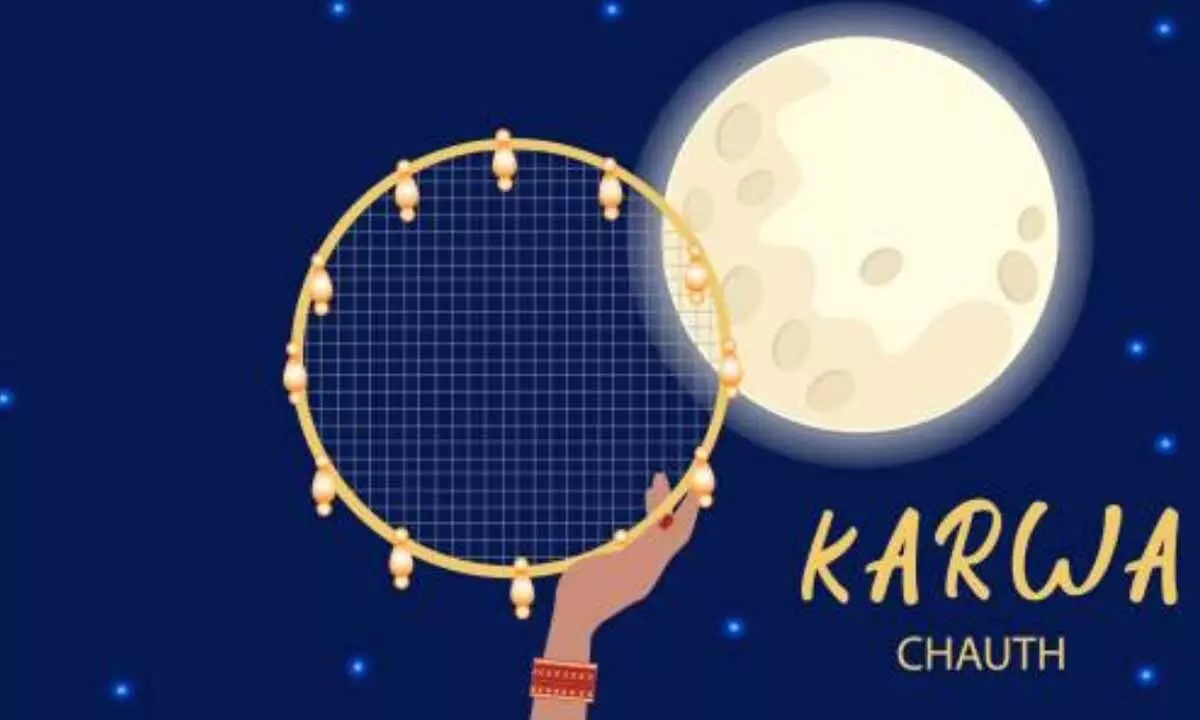Karwa Chauth 2024: Date, Moonrise Timing, Significance, and More

Karwa Chauth is a prominent festival celebrated across various states like Gujarat, Maharashtra, Punjab, Haryana, Uttar Pradesh, Rajasthan, Madhya Pradesh, Himachal Pradesh, and Delhi.
Karwa Chauth is a prominent festival celebrated across various states like Gujarat, Maharashtra, Punjab, Haryana, Uttar Pradesh, Rajasthan, Madhya Pradesh, Himachal Pradesh, and Delhi. Known as Karak Chaturthi, it coincides with Sankashti Chaturthi. On this day, married women observe a fast for the longevity and well-being of their husbands, worshipping Lord Shiva, Goddess Parvati, Lord Kartikeya, and Lord Ganesha. The fast has now expanded, with some women observing it for their future husbands, and in recent times, even some men have joined in to fast for their wives.
Date and Timings for Karwa Chauth 2024
Kartik Krishna Chaturthi Tithi Starts: Sunday, October 20, 2024, at 06:46 AM
Kartik Krishna Chaturthi Tithi Ends: Monday, October 21, 2024, at 04:16 AM
Karwa Chauth Vrat: Sunday, October 20, 2024
Karwa Chauth Puja Muhurat: 05:46 PM to 07:02 PM (Duration: 1 hour 16 minutes)
Fasting Duration: 06:25 AM to 07:54 PM (13 hours 29 minutes)
Moonrise Time: 07:54 PM
Rituals and Puja Method
On the day of Karwa Chauth, women wake up early to bathe and wear clean clothes, followed by making a pledge to observe the fast. Traditionally, an image of Karwa is drawn on the walls with ochre, and after adorning themselves with jewelry and makeup, they place the images of Goddess Parvati, Lord Shiva, Lord Ganesha, and Kartikeya at the place of worship. Water is placed in a karwa (earthen pot) and worshipped, followed by offering water to the Sun God. The story of Karwa Chauth is then recited, and after seeking blessings from elders, the fast is observed till moonrise.
After spotting the moon, water is offered to it, and women see the moon through a sieve before viewing their husband’s face. The fast is broken when the husband offers his wife her first sip of water.
The Story Behind Karwa Chauth
Various legends are associated with Karwa Chauth, but the most popular one is the story of Veeravati. She was the only sister of seven brothers, and during her first Karwa Chauth after marriage, she observed a fast. Growing weak from hunger, her brothers tricked her into believing the moon had risen by setting up a mirror in a tree. She broke her fast prematurely, which caused her husband to fall ill and die. Realizing the trick, Veeravati prayed to Goddess Parvati, who told her to complete the fast, which ultimately revived her husband.
Another tale revolves around Karwa, a devoted wife whose husband was attacked by a crocodile. She bound the crocodile with a cotton thread and prayed to Lord Yama to save her husband, who then granted her request and banished the crocodile to hell.
Karwa Chauth Rituals and Traditions
Sargi: The Pre-Dawn Meal
The day begins with a meal known as Sargi, which is prepared by the mother-in-law for the daughter-in-law before sunrise. This meal typically includes fruits, nuts, sweets, and other nourishing items, helping the women sustain themselves through the day’s fasting. Sargi is seen as a bonding moment between the two women in the family.
Fasting Throughout the Day
Women fast from sunrise to moonrise, abstaining from both food and water. As the day progresses, they dress in their finest clothes, usually red or green, adorned with jewelry and henna. The fast symbolizes their prayers for their husband’s long life, prosperity, and health.
The Evening Puja
In the evening, women gather for the Karwa Chauth Puja, where they sit in a circle, each with a karwa filled with water and a diya (lamp). During the puja, the story of Veeravati or other legends of Karwa Chauth are recited, emphasizing devotion, faith, and the significance of the fast. Women chant prayers and mantras while passing the karwas in a circle, seeking blessings for their husbands.
The Moonrise and Breaking the Fast
The fast is broken once the moon rises. Women view the moon through a sieve or cloth, and then look at their husbands through the same sieve. This act is symbolic of passing the blessings from the moon to their husbands. The husband then offers his wife her first sip of water, followed by a morsel of food, marking the end of the fast.
Changing Trends: Men Participating in Karwa Chauth
Traditionally, Karwa Chauth was a fast observed solely by women for their husbands. However, in recent times, modern couples see this day as a celebration of mutual love. Many men now participate in the fast, demonstrating their love and commitment to their wives. This shift reflects changing dynamics in marriage, where both partners contribute equally to the relationship.
Bollywood's Influence on Karwa Chauth
Karwa Chauth has gained additional prominence due to its romantic portrayal in Bollywood movies, where the fast is often depicted as a grand celebration of love. As a result, the festival has become popular even among non-Hindu and non-North Indian families, turning into a day that celebrates the bond of marriage. However, some also question the glorification of traditional gender roles through this festival, particularly in younger generations.
Karwa Chauth continues to be a significant tradition for married couples, evolving with time while retaining its deep-rooted significance.















